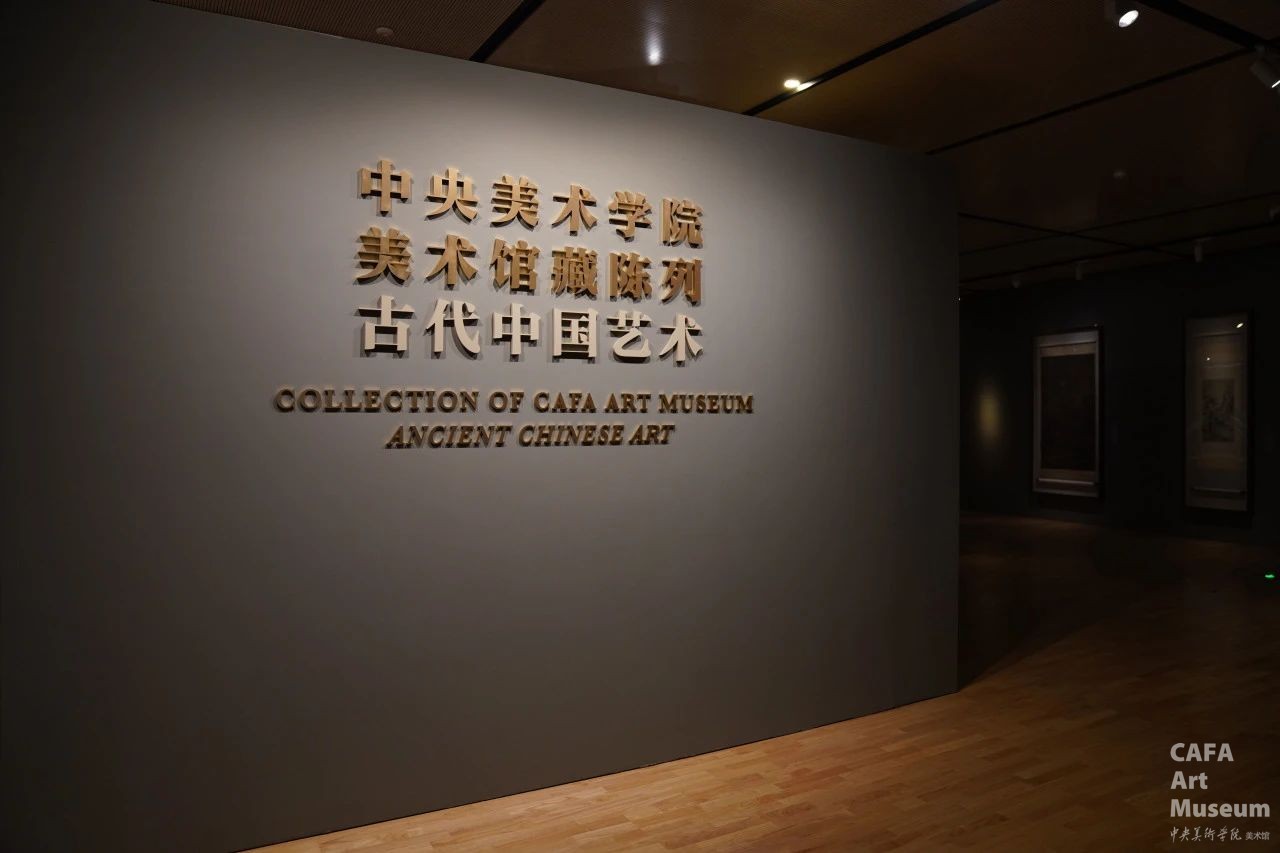

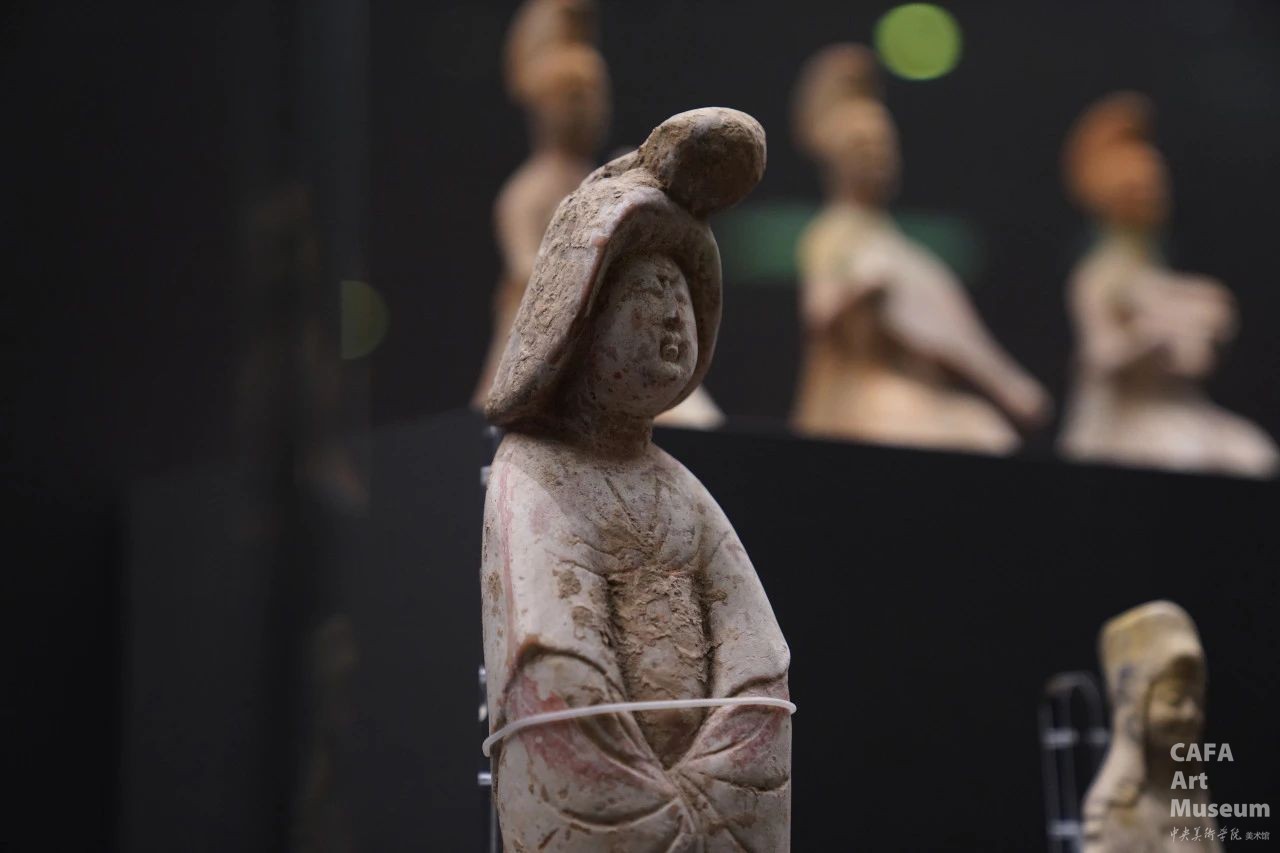
The "Collection Of CAFA Art Museum" is currently on display at CAFA Art Museum. The section presenting ancient Chinese art in this exhibition is one of the characteristics of the museum's collection. More than 200 pieces of collections have been selected and exhibited in two major categories: "Artifacts" and "Calligraphy and Paintings". These collections include nine subcategories: bronze mirrors, portrait bricks, figurines, ceramics, religious statues, figure paintings, flower-and-bird paintings, landscape paintings, and calligraphy works, spanning a time period of two thousand years. This article focuses on the female figurine collections that showcase the charm of the Tang Dynasty, aiming to let you experience the spiritual outlook of that era.
Maidservant figurines and court lady figurines are common themes among the burial figurines in Tang Dynasty tombs,some scholars believe that a significant change in the production of figurines during the Sui and Tang dynasties is that a large number of dancing and musical performer figurines and maidservant figurines replaced the armored soldier and horse figurines that were popular in the Northern Dynasties. This reflects the changes in social mentality and aesthetic preferences. From the early Tang Dynasty to the late Tang Dynasty, the style of female figurines changed from slender in body shape to plump and graceful, which is a relatively intuitive indicator demonstrating the social aesthetic preferences of that time.
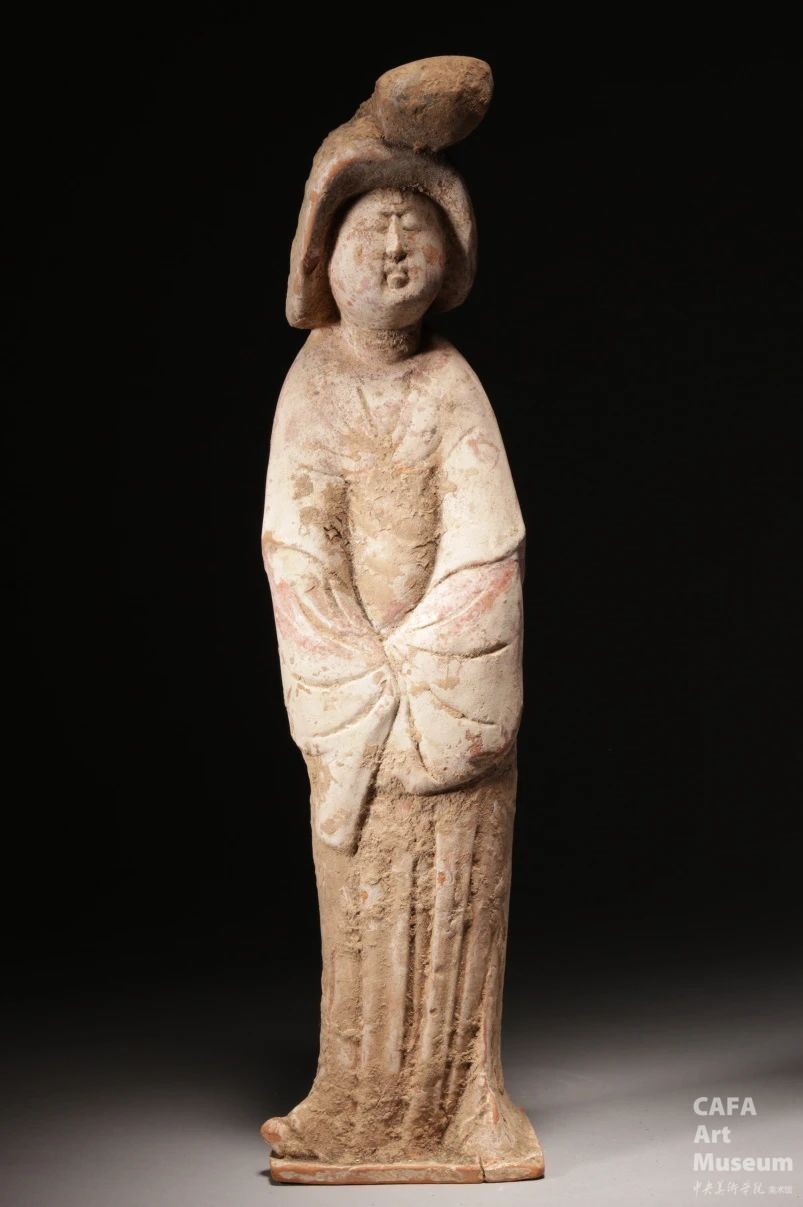
Court Lady Figurine, No. 2236, Tang Dynasty, Collected by the CAFA Art Museum
The Court Lady Figurine, No. 2236, on display at the CAFA Art Museum, has its sleeves folded. It stands on a thin, irregularly shaped base plate, with its face slightly turned to the left. Although it is in an upright standing posture, it exudes a sense of dynamism. It has coiled hair and a drooping bun, a round face, delicate facial features, and its eyes are slightly closed. It wears a long robe with wide sleeves, and a silk scarf drapes around the shoulders and hangs down in front of the body. Below, it is dressed in a chest-length long skirt, with the hem of the skirt reaching the ground and revealing one shoe.The figurine is made of red pottery with a white coating applied. It might have originally been painted with colors, but now the colors are no longer extant.
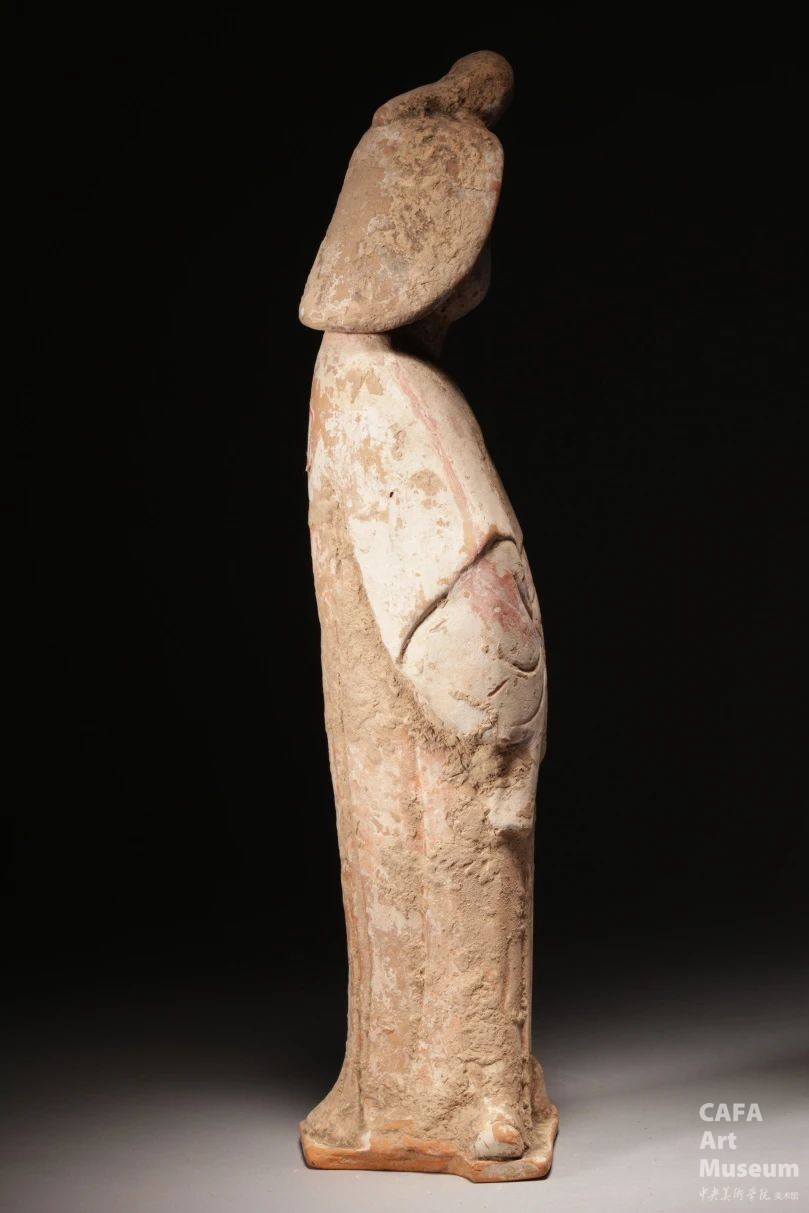
Court Lady Figurine, Number 2236, Tang Dynasty, Collected by the CAFA Art Museum

In terms of style, this female figurine has a graceful figure and a plump body, reflecting the fashion of regarding plumpness as beauty after the prosperous Tang Dynasty. In fact, the Tang Dynasty did not always pursue a plump figure. Female figurines in the early Tang Dynasty generally had a slender figure and a delicate and pretty face, showing the lingering charm of the Wei and Jin dynasties. It was not until the 8th century that female figurines with a plump body and loose clothing began to be popular. During the Tianbao period, the figures of female figurines became even plumper. The changes in the figures of female figurines in different periods of the Tang Dynasty reflect the continuous changes in the aesthetic concepts of that time.
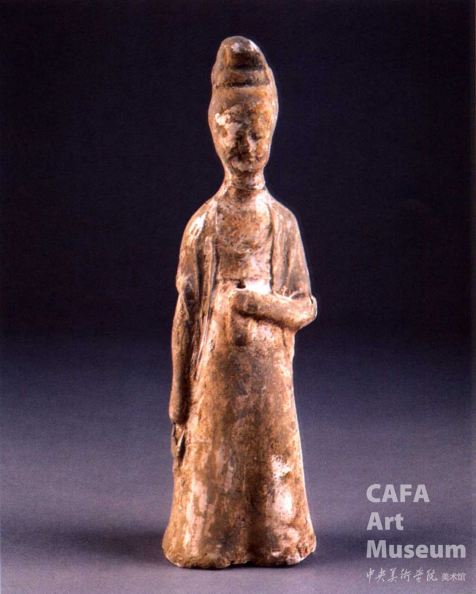
Female figurine of the early Tang Dynasty, unearthed from the tomb of Liu Kai in Yanshi, Tang Dynasty.
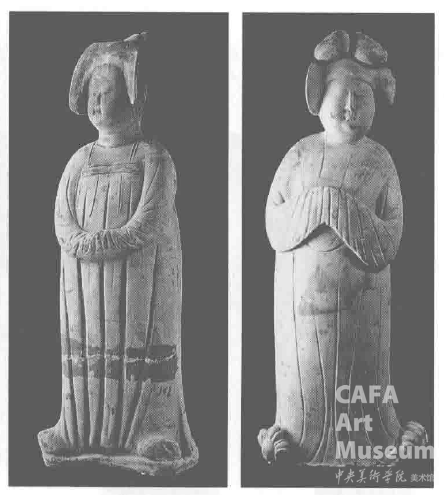
Court lady figurines from the Tianbao period, unearthed from the Tang Dynasty tomb in Hansasai, Xi'an
The hairstyle of coiled hair with hanging buns and the attire of loose robes and long skirts were the favored outfits of women in the Tang Dynasty. In Tang poetry, a woman's attire was described as "The skirt trails like six lengths of the waters of the Xiang River, and the sideburns are coiled like a stretch of clouds over Mount Wu." Similar images can also be seen in the works of Zhang Xuan, a painter of the Tang Dynasty.

The Spring Outing of Lady Guo Guo by Zhang Xuan
Court lady figurines are not of the same category as the more common "maid figurines". They usually wear more magnificent and luxurious clothes, with their hands clasped in front of them or their sleeves covering their hands, as if they are not engaged in any labor. Their sizes are also larger than those of other female figurines, which seems to imply their noble status. Some scholars believe that this type of female figurine may represent the "concubines" in the Tang Dynasty system. They do not represent specific individuals, but symbolize the status of the tomb owner. The greater the number of these figurines, the more noble the status of the tomb owner is.
The court lady figurines enable us to still appreciate the graceful charm of the prosperous Tang Dynasty, which was plump yet charming, even after a thousand years. At the same time, their appearance is also closely related to the concept in the funerary customs of the Tang Dynasty that increasingly emphasized the imitation of real life.
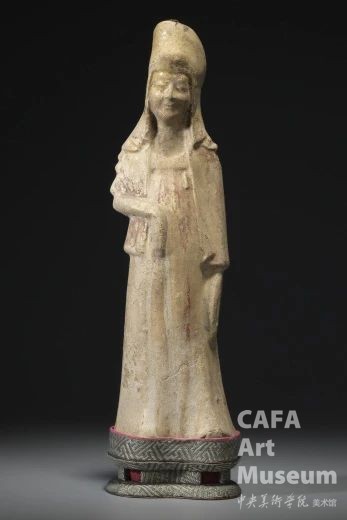
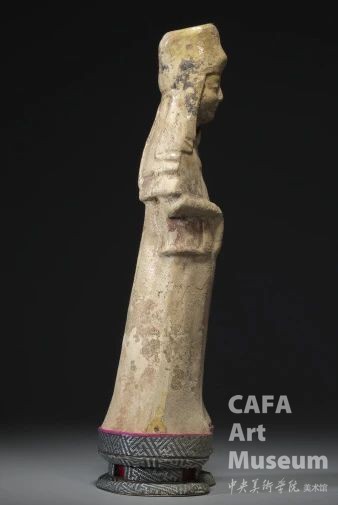
The Maid Figurine with a Wind Hood, Number 574, Tang Dynasty, Collected by the CAFA Art Museum
Another exhibited maid figurine with a wind hood, numbered 574, has a beautiful appearance. Its face is plump, dignified, with thin eyebrows, long eyes, and a slight smile. It wears a wind hood on its head. The top of the hood is pointed on the left and slanted on the right, and it is tied at the back of the head. It is dressed in a narrow-sleeved shirt, with silk scarves draped over both shoulders, and a long skirt that trails on the ground. The skirt belt is knotted above the chest, and the ends of the belt hang down. There was originally red colored painting on it. The left arm hangs down naturally, and the long sleeve reaches the knee. The right arm is bent halfway with the sleeve hanging down. This kind of image has also been unearthed in other Tang Dynasty tombs, such as the Tang Dynasty tomb in the brick factory at Goutoukou, Yanshi County, Henan Province (whose dating is also considered to be around the reign of Emperor Gaozong, the early Tang Dynasty period), the tomb of Jia Dunyi in Luoyang, Henan Province in the first year of Xianqing (656 AD), and the tomb of Zhang Shigui in Liquan, Shaanxi Province in the second year of Xianqing of Emperor Gaozong (657 AD).
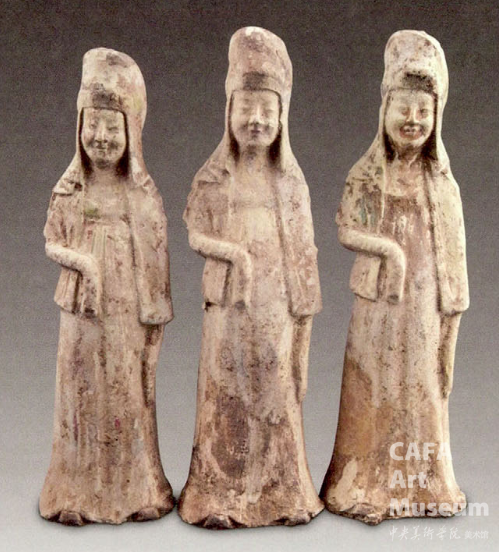
The maid figurine wearing a wind hood was unearthed from the tomb of Jia Dunyi in Luoyang, Henan Province
Jia Dunyi served as the Prefect of Luozhou during his lifetime. The epitaph of Zhang Shigui states that he was titled "Grand General Assisting the State, Military Governor of Jingzhou, and Duke of Guo State". Many of the funerary objects in the Tang Dynasty tomb at the Goutoukou Brick Factory in Yanshi County, Henan Province are considered to be similar to those in the tombs of Zhang Shigui and Zheng Rentai. The social status of the tomb owner is likely to be relatively high as well. Moreover, the approximate dating of these three tombs is all during the reign of Emperor Gaozong. Therefore, it is speculated that this type of maid figurine with a wind hood was quite popular in the tombs of a relatively high social class in the Luoyang area of Henan Province during the reign of Emperor Gaozong.
Similar images are also used for maid figurines. For example, a maid figurine with a similar pose was unearthed from the tomb of Jia Dunyi. The only difference between it and the maid figurine with a wind hood lies in their clothing. This kind of image might have been a relatively popular template in the production of pottery figurines at that time.
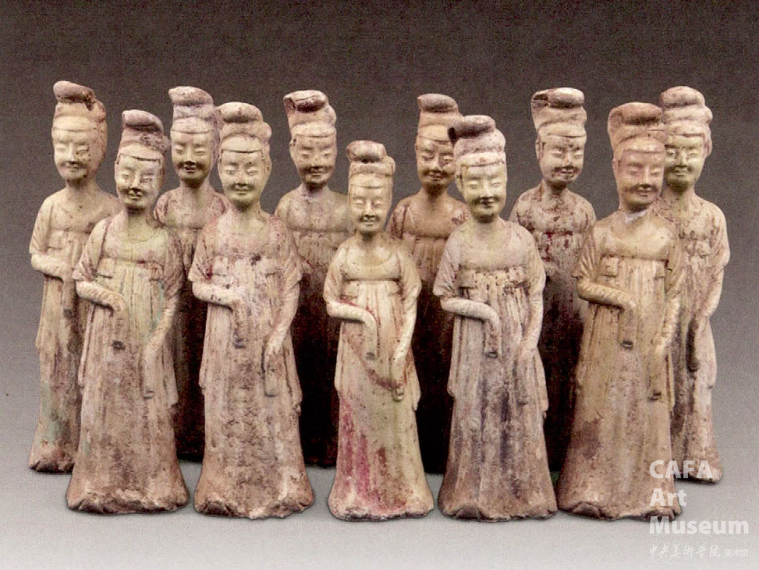
The maid pottery figurine was unearthed from the tomb of Jia Dunyi in Luoyang, Henan Province
The female pottery figurines of the Tang Dynasty have various postures. This maid figurine wearing a wind hood reflects the social aesthetic of the early Tang Dynasty when plumpness was not yet pursued. The slender and narrow sleeves and the slightly pointed wind hood exhibit the lingering charm of the Northern Dynasties, serving as a record of the popular clothing culture and female images of that time. It is a historical specimen that reflects the style exchanges and transformations in the early Tang Dynasty, and also important physical materials for studying the ancient social life, art, and culture of that era.
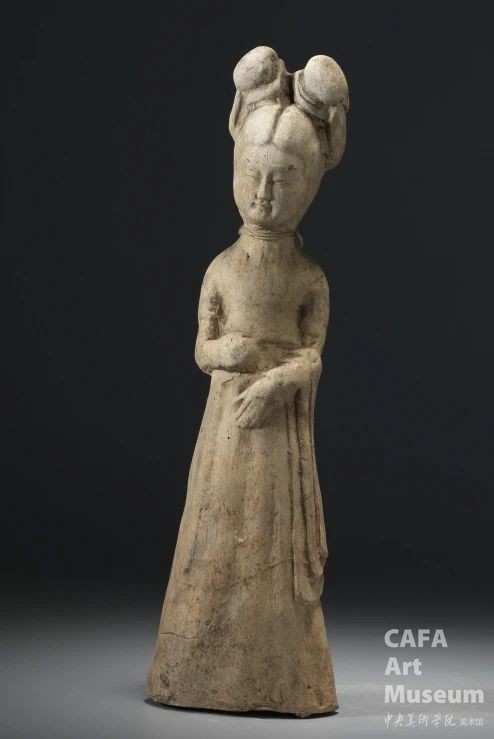
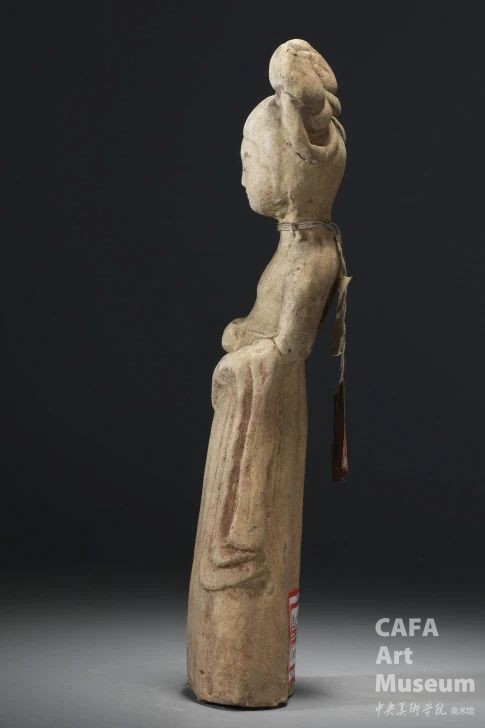
Painted Maid Figurine with Double Buns, Number 874, Tang Dynasty, Collected by the CAFA Art Museum
The Painted Maid Figurine with Double Buns, Number 874, in the exhibition hall has its hair styled in double buns. It wears a narrow-sleeved short blouse on the upper body and a long skirt that reaches the ground on the lower body. There are some traces of painted patterns on the skirt. The pottery figurine is not glazed and it should have originally had painted decorations. Four similar maid figurines were unearthed from the tomb of Liu Kai in Yanshi, Henan. The painted works outline red lips, and a square low collar is painted on the chest. The long skirt is decorated with red vertical stripes. The figurine has a round face and a slender figure. Its left hand hangs down with the long sleeve reaching the leg, and its right hand bends at the elbow and is placed in front of the abdomen. A long silk scarf is hung on the crook of the arm. There is no base, and it has the characteristics of the early Tang Dynasty.
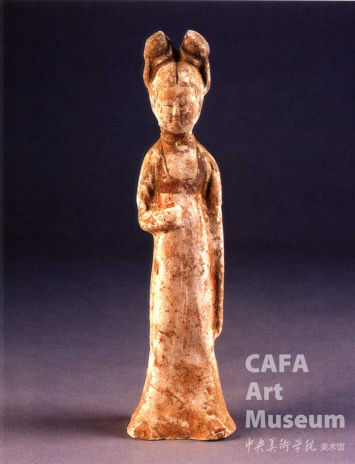
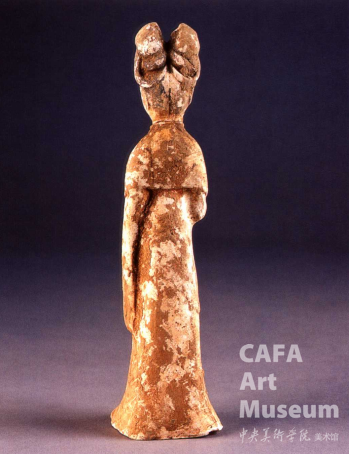
Maid Figurine with Double Buns, unearthed from the tomb of Liu Kai in Yanshi, Henan Province, in the Tang Dynasty
This type of clothing is quite common in the images of maid servants. For example, the clothing of the maid servants in the murals of the tomb of Princess Xincheng of the Tang Dynasty is very similar to it. In terms of style, it often features narrow sleeves and occasionally exposes the chest, demonstrating the changes in the status of women during the prosperous era, as well as the inclusive and culturally diverse open atmosphere of the Tang Dynasty. This type of clothing is quite common in the images of maid servants. For example, the clothing of the maid servants in the murals of the tomb of Princess Xincheng of the Tang Dynasty is very similar to it. In terms of style, it often features narrow sleeves and occasionally exposes the chest, demonstrating the changes in the status of women during the prosperous era, as well as the inclusive and culturally diverse open atmosphere of the Tang Dynasty.
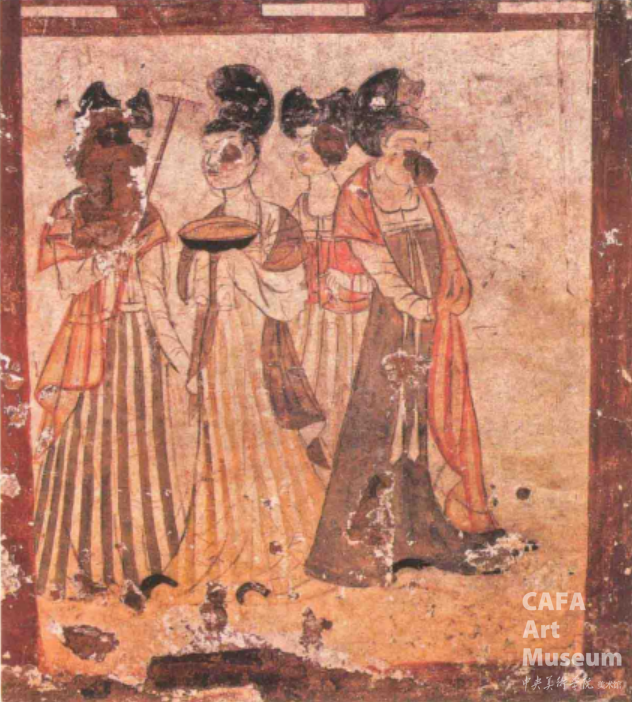
Mural of Maid Servants, unearthed from the tomb of Princess Xincheng of the Tang Dynasty in Liquan, Xianyang

If you are eager to explore the elegance and splendor of the prosperous Tang Dynasty,
Don't miss that touch of charm in the exhibition hall.
The female pottery figurines of the Tang Dynasty that bear witness to history.
They stand there quietly,
Carrying the stories and amorous feelings of a thousand years,
Waiting for your arrival.
Editors: Wang Ziyi, Meng Yuening
Instructor: Geng Shuo

Collection Of CAFA Art Museum
-- Ancient Chinese Art
Exhibition Time: Starting from January 21, 2025
Exhibition Venue: Gallery 2A, 2nd Floor, CAFA Art Museum
Chief Editor / He Yisha
Editor / Du Yinzhu
